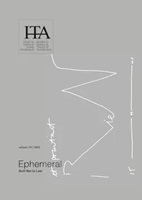From Temporary Spatial Practices to Permanent Architectural Forms. The Case of “La Terenuri” from Mănăștur Neighborhood, Cluj-Napoca
From Temporary Spatial Practices to Permanent Architectural Forms. The Case of “La Terenuri” from Mănăștur Neighborhood, Cluj-Napoca
Author(s): Diana Galoyan, Silviu MedeșanSubject(s): Architecture, Rural and urban sociology, Sociology of Culture, Sociology of Art
Published by: Universitatea de Arhitectură şi Urbanism »Ion Mincu«
Keywords: rural-urban hybridization; urban commons; urban agriculture; bricolage; mass-housing;
Summary/Abstract: This paper discusses the case of the “La Terenuri” area, situated in Mănăștur neighborhood, in Cluj-Napoca (Romania). A socialist housing complex, planned and built as a working-class dormitory starting with the 1960s, Mănăștur hosted mainly a population with rural origins who was attracted in the city to work in the newly developed socialist industries. Using their gardening skills and encouraged by favorable communist legislation, these residents started taking care of the spaces in-between the blocks, thus coproducing forms of urban commons. They transformed the modernist urban space into a livable community garden through improvisation, upcycling and by sharing resources. These temporary rural-inspired practices were used to cobuild a common space that still functions today in an unfinished modernist project. Inspired by these practices, the authors of this paper initiated, in 2012, a participatory cultural project entitled “La Terenuri,” aiming to create a green meeting space by working with the residents. Following this project, in 2019, the local authorities decided to plan and build a sports park in the area, incorporating some of the features experimented in the cultural project of co-creation. From a participatory action-research angle, this paper presents how rural-inspired temporary practices and participatory-cultural experiments can influence the permanent form of a neighborhood regeneration project, using diverse methods like interviews (with original gardeners, residents and activists) or co-designing temporary urban infrastructure (in the participatory-cultural project). Finally, this case-study allows an evaluation on how our temporary experiments shaped urban policy.
Journal: sITA – studii de Istoria şi Teoria Arhitecturii
- Issue Year: 2022
- Issue No: 10
- Page Range: 169-178
- Page Count: 10
- Language: English

